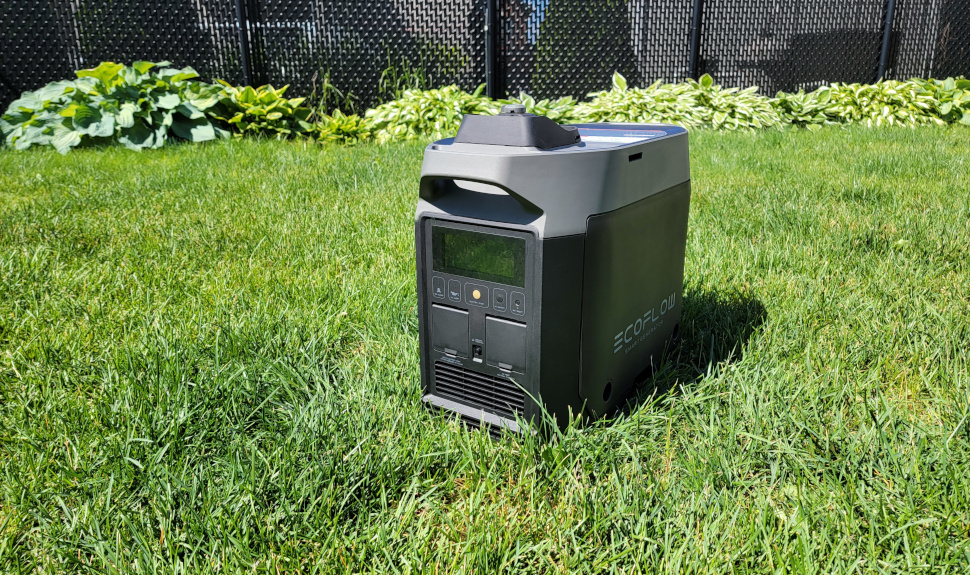TechRadar Verdict
EcoFlow has improved the humble gas generator by putting more smart into it. It is now a connected unit that can combine with other EcoFlow products to provide electricity for a much longer period.
Pros
- +
Wi-Fi accessible
- +
Carbon monoxide detector
- +
Remote start
- +
DC output for other EcoFlow products
Cons
- -
Noisy
- -
Expensive
Why you can trust TechRadar
High-capacity battery power stations could spell the end for the ubiquitous gas generator. Together with solar panels and the increasing cost of gas, people have more reasons to switch to an alternative energy source. Does this signal the end for the gas generator?
Not so fast. EcoFlow has revisited the classic generator, giving it a few tricks along the way. Its latest product, the EcoFlow Smart Generator, is a highly sophisticated gas-powered generator that works closely with other EcoFlow products such as the Delta Pro battery station. It is an attempt to solve the problem of power outages lasting longer than a few hours which is the bane of battery-based power solutions.
The question is whether the EcoFlow Smart Generator is one of the best portable power stations. Read on to find out.
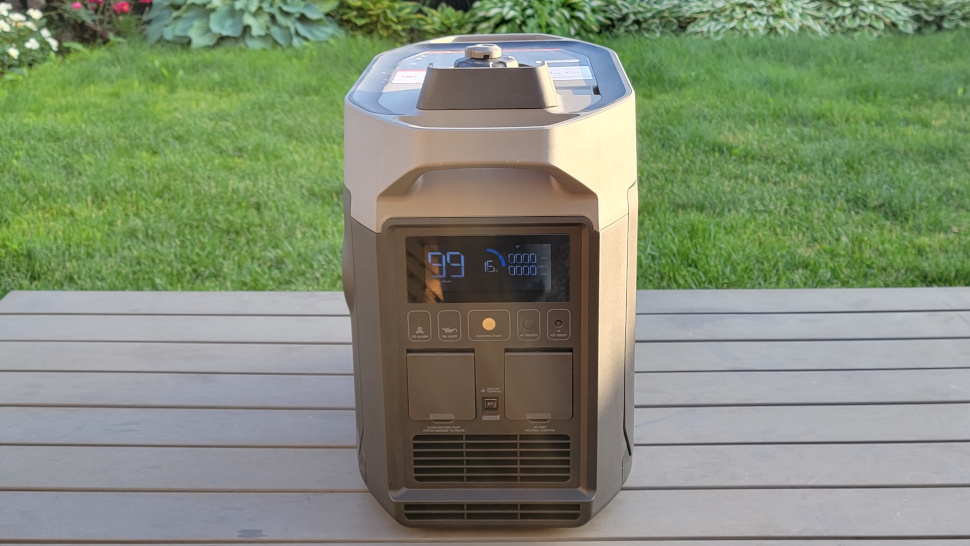
EcoFlow Smart Generator: Price and Availability
The 1800W smart generator is compact and fits nicely in EcoFlow’s ecosystem. At an MSRP of $1399, it is expensive for the output power offered but the added features are worth the extra money.
EcoFlow Smart Generator: Design
The generator weighs 28.5kg and measures 59.7cm x 59.6cm x 47.5cm. It has two handles, one in front and one at the back, making transportation somewhat bearable. It is missing a set of wheels which would have been ideal for this heavy product. The plastic case feels strong and will last many years. Four rubber feet provide stability and prevent the unit from wobbling too much when the motor is running.
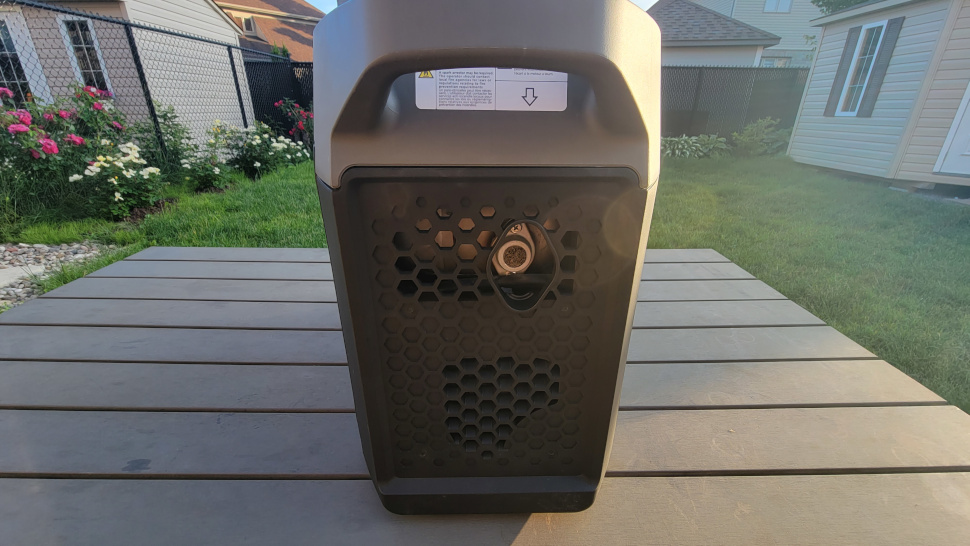
Accessories needed for the periodic maintenance of the generator are provided, including an oil funnel, a screwdriver, and a spark plug socket. The user manual and warranty card are also supplied while an extra battery cable enables using the generator with other EcoFlow devices right away.
The built-in R80-i engine is a 79.7cc 4-stroke single cylinder. It has a maximum of 2.0 HP at 3600 rpm. The 4L fuel tank allows three and a half hours of continuous use which translates into a 5.4kWh of energy storage. Only unleaded gasoline fuel of octane number 86 or higher should be used with the generator. The engine smoke outlet is located at the back and should be cleared of any obstructions.
Engine oil change and carbon monoxide warning are shown on two LEDs located on the front panel. Two push buttons control the pairing of a smartphone with the generator and enable the 1800W AC output socket. A dedicated 32A DC socket connects to other EcoFlow battery-powered units such as the Delta Pro. This minimizes energy loss by outputting the cell charging voltage instead of the conventional 120V AC voltage.
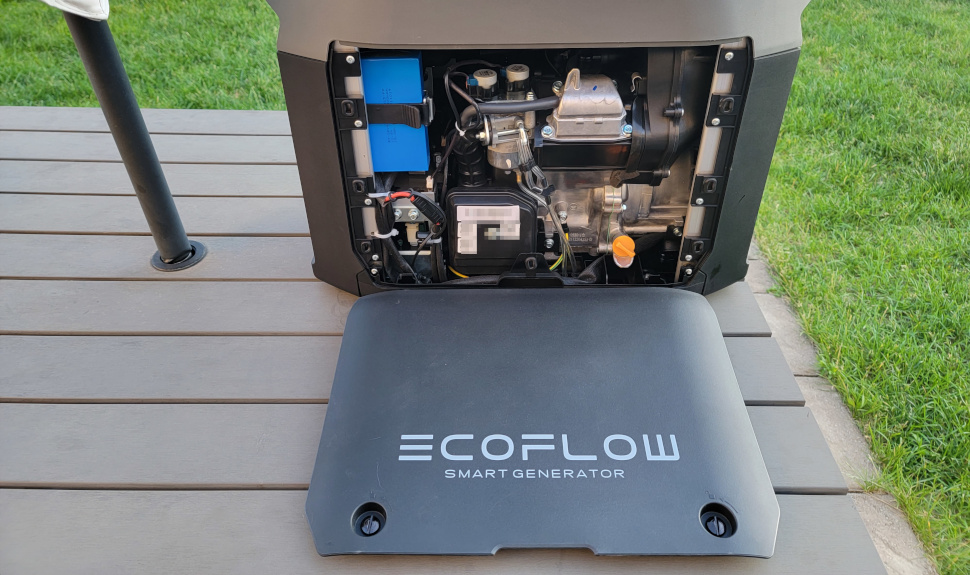
EcoFlow Smart Generator: In use
Sporting the same look as other EcoFlow devices with the trademark case and big segmented front LCD, the Smart Generator is fundamentally different from other EcoFlow products as it is less environmental-friendly and considerably noisier. A label on the case warns not to use the generator in an enclosed space since the engine emits carbon monoxide gas. That said, the built-in carbon monoxide detector can turn off the engine when too much is detected.
The generator has to be prepped before its first use. The fuel tank should be filled with at most four liters of unleaded gasoline. Next, the maintenance panel located on the right side is removed to add oil and connect the rechargeable battery. The generator is surprisingly fast to turn on using the start push button, taking just a couple of seconds.
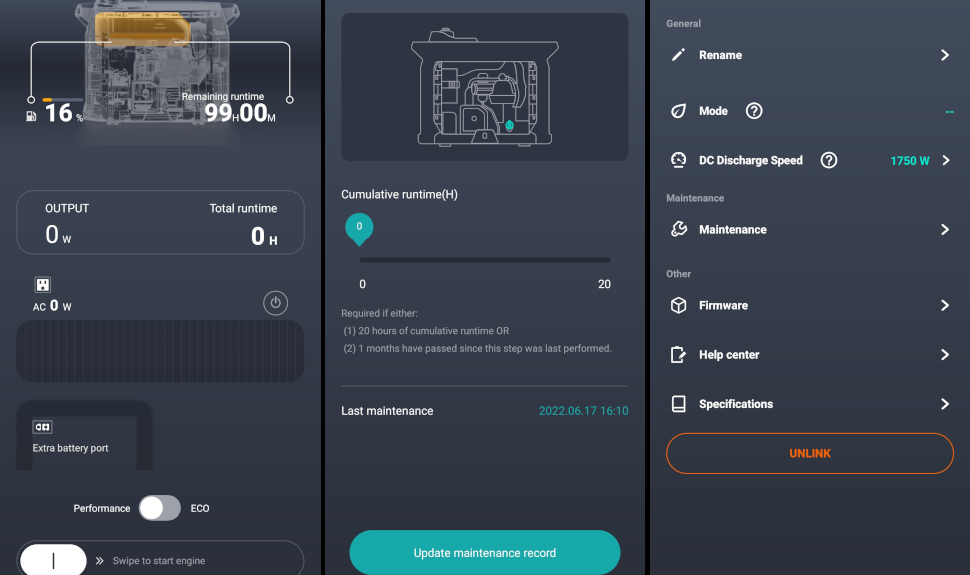
The EcoFlow smart generator can either be used standalone like a regular gas generator or together with an EcoFlow battery power station where it charges the latter whenever the battery capacity reaches a certain level. The inclusion of an electric start in the generator comes in handy since the battery station initiates its charge through the battery cable.
As with any gas generator, the engine requires regular use to keep it trouble-free. If it isn't used for an extended amount of time, the manufacturer recommends emptying the fuel tank and carburetor. Other components require maintenance once in a while to keep the generator in an optimal working condition. This includes changing the engine oil and cleaning the air filter after 20 hours of operation.
The EcoFlow mobile app available for both iOS and Android can be used to control the generator through Wi-Fi. The setup is very easy with the pairing initiated by holding the IOT reset button for a few seconds. As the generator uses the 2.4GHz frequency, the procedure has to be done with a 2.4GHz Wi-Fi router and smartphone. Features such as electric start, fuel gauge, and maintenance log are all available through the app.
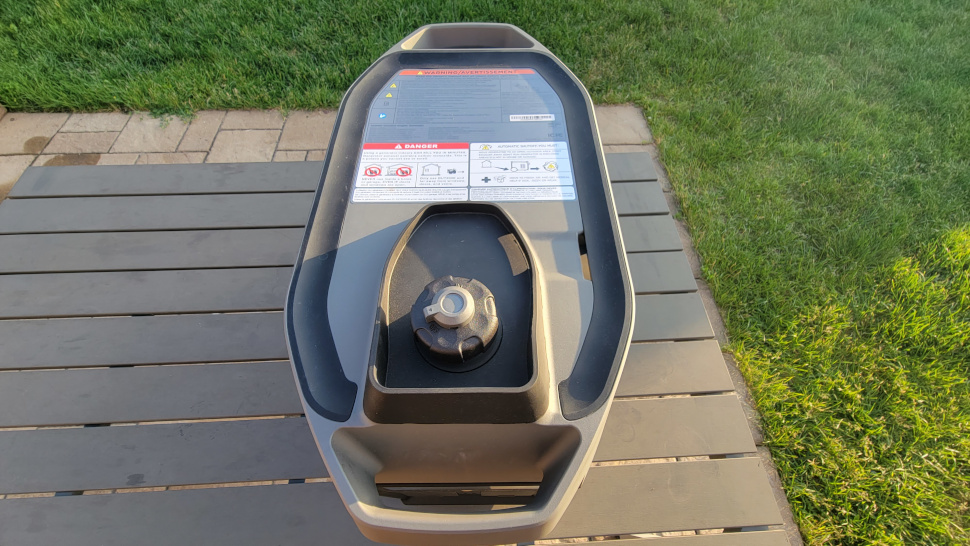
EcoFlow Smart Generator: The competition
A gas-powered generator is ideal whenever there are extended blackouts. Like a portable battery station, modern generators provide a slew of outputs covering most large appliances as well as electronic devices such as phones and laptops. It is still uncommon to see a generator equipped with Wi-Fi and a carbon monoxide detector so the EcoFlow is in a class of its own.
The Wen 56200i 1600W portable inverter generator is similar to EcoFlow’s generator. It has an identical engine and fuel tank size but lacks safety features such as the carbon monoxide detector. Being a universal generator, it does not have the dedicated high current DC socket to connect to an external battery such as the EcoFlow Delta Pro. There is no remote start and of course no Wi-Fi connectivity.
EcoFlow Smart Generator: Verdict
The Smart Generator is great if you already have other EcoFlow products. It complements superbly the Delta Pro, for example, extending its functionality by providing a secondary power source. Charging with this generator instead of a conventional one will be more efficient resulting in gas savings. On the other hand, it is noisier and pricier than competitive models.
My interest has been piqued by everything electronic since a young age, with a penchant for the dark art of tearing things apart. My daily duty is to marry software and hardware modules and I have to admit that this is much harder than cooking. When I’m not busy at work, I’m on the lookout for the latest and greatest hack! I am passionate about portable power generators (or power stations) as well as maker products such as the Raspberry Pi and any similar SBC (single board computers)
